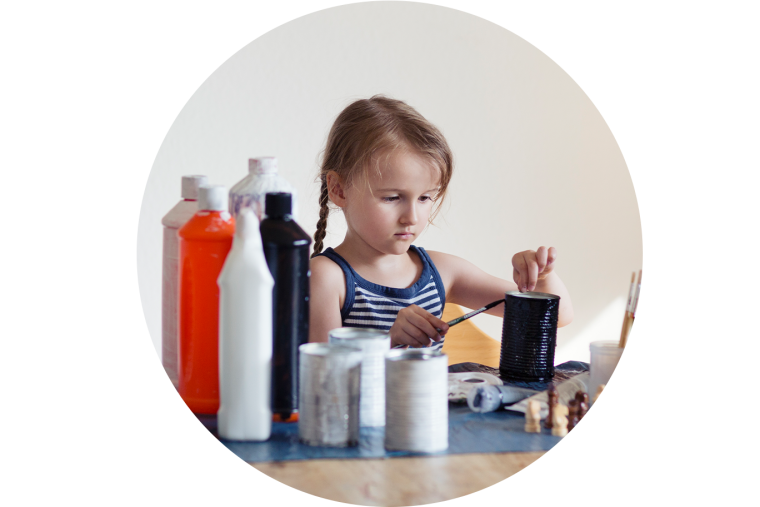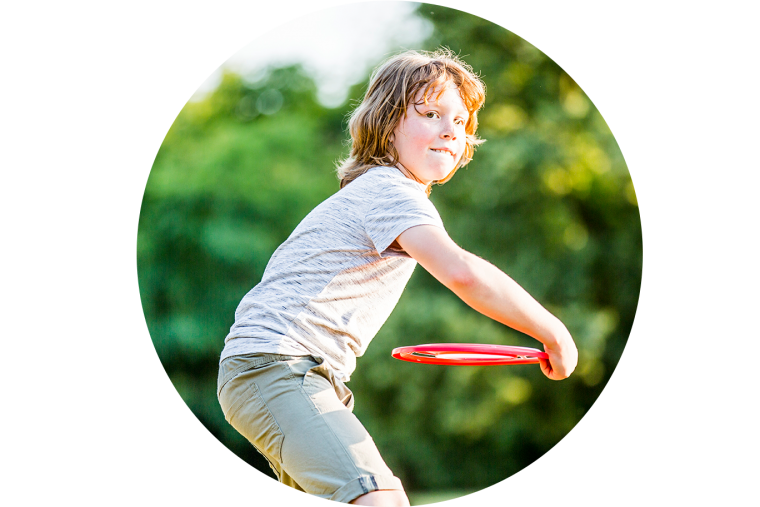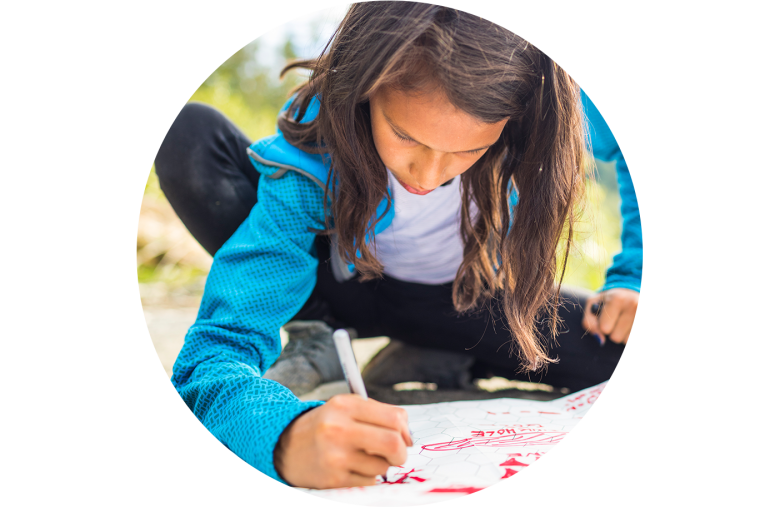Spring into action
12 amazing activities for parents to do with kids this spring
With warmer temperatures, more hours of daylight, and bursts of color, spring can be full of energy and hope. The Week Junior has picked 12 activities to help your child make the most of the season. Whether it’s creating and baking, learning something new, or exploring the outdoors, we’ve got something to interest everyone. While some activities can be tried alone or with friends or family, some may require a helping hand. Good luck, and don’t forget to email us and share a photo of the fun to hello@theweekjunior.com.

Create and bake
Build an apple bird feeder
You need: apple, apple corer, string, three small sticks, sunflower seeds
Carefully remove the apple core with the corer. Thread the string through the hole in the middle of the apple, then tie the end to one of the sticks. Push the sunflower seeds into the top half of the apple for the birds to eat, and insert the last two sticks into the side of the apple to serve as perches for the birds. Lastly, hang the apple onto a tree or bush, and see how many birds you can spot pecking at the seeds and apple.

Make chocolate cornflakes cakes
You need: 3½ tablespoons butter, 3½ ounces chocolate (broken into chunks), 3 tablespoons golden syrup, ½ cup cornflakes, 12 cupcake liners
Slowly melt the butter, chocolate, and golden syrup together in a saucepan on a stovetop, or in a microwave-safe bowl in the microwave, taking care not to let it burn. Allow it to cool a little before mixing in the cornflakes. Stir the ingredients together and spoon the mixture into 12 cupcake liners arranged on a baking tray. Put tray in the refrigerator to set.

Make a tin-can wind chime
You need: paintbrush, colored acrylic paint, 4 tin cans (empty and clean, with tape around the top to cover sharp edges), hammer, nail, scissors, string, 4 beads
Paint each tin a different color. When the paint has dried, ask an adult to tap a small hole in the top of each tin with the hammer and nail. Next, cut a length of string around 12 inches long and tie a bead to one end. Tie a knot in the string about 4 inches above the bead, then carefully feed the string through the hole in one tin, so the knot and bead are on the inside. Do the same with each of the other tins, using different lengths of string. Tie the tins from a branch or a clothesline and wait for the wind to blow.

Bake a loaf of bread
You need: 3 cups whole-wheat or white bread flour, .25 oz. sachet of fast-action dried yeast, 1 teaspoon salt, 2 tablespoons olive oil, 1 tablespoon honey, 2-pound loaf pan
1. Mix the flour, yeast, and salt with your hands in a large bowl. Stir 10 ounces of hot water with the oil and honey, then stir these into the dry ingredients to make a soft dough.
2. Turn the dough out onto a lightly floured surface and knead for 5 minutes until the dough no longer feels sticky. Sprinkle with a little more flour if you need it.
3. Put the dough in the pan, cover with a plastic food bag, and leave it to rise for 1 hour. Make sure the dough has filled the pan, and it no longer springs back when you press it with your finger.
4. Heat the oven to 400[degree symbol] F. Make a few cuts across the top of the loaf with a knife, then bake for 30 to 35 minutes until the loaf is risen and golden. Remove the bread from the pan, place onto a cooling rack, and tap the base of the bread to check that it is cooked (it should sound hollow). Let cool.

Learn something new
Build a bug hotel
You need: a small, clear plastic bottle, things to put inside (like sticks, leaves, tree bark, and pine cones from your local area), string
Cut the ends off a clear, plastic bottle to make a tube. Fill the tube with as many of the sticks, leaves, bark, and pine cones as you can, making sure they don’t fall out. Next, use a string to hang your bug hotel from a tree or tuck it under a bush. Wait a few days and see who visits.

Learn about birds
Observe different bird behaviors and what they mean. Start by heading to an outdoor space, like your backyard or a park, where different bird species can be seen. Research what types of birds you’re looking at using the free Audubon Bird Guide App, and try to identify what they’re doing. They could be flocking (creating large groups to fly or feed, creating safety in numbers), preening (cleaning their feathers using their beak or feet), hiding (using camouflage or cover to protect themselves from predators), or singing (communicating using calls and songs). Write down your findings in a notebook, recording things like which behaviors are most common or how they differ between bird species.

Create a collage self-portrait
You need: newspapers, magazines, scissors, paper, glue stick
Try learning more about yourself by creating a self-portrait that reflects your personality. Start by cutting out images and words from a newspaper or magazine. Think about what reflects you as a person: Your interests, hobbies, and how you are feeling are good places to begin. Arrange the words and pictures onto a sheet of paper before gluing them down. This allows you to experiment with where you want to place everything and to see how the shapes and colors combine. When you’re ready, glue them into place. Ask your family and friends if they recognize you from the self-portrait.

Grow your own food
You need: seed trays or small pots with holes in the bottom for drainage, seed compost, spring-growing seeds like tomatoes or pole beans, clear plastic bag
Fill the pots almost to the top with seed compost. Place the seeds on the surface, cover them with some more compost, and water gently. Leave the pots on a warm, sunny windowsill covered with a plastic bag until you see shoots appear. Once this happens, space them out into larger pots. In late spring, plant them in the ground or in compost bags, and water every day. Tall climbing plants, like pole beans, will need strong supports like a trellis or stakes.

Explore the outdoors
Try Geocaching
Geocaching is a game that people play all over the world. Just like a treasure hunt, you search for tiny boxes called caches that have been hidden in all kinds of places nearby. It’s a great game for exploring the outdoors with family and friends and can be played anywhere, including in the city, the woods, the beach, or even on mountaintops.
Create an account online here or through the Geocaching app to view a map of geocaches near you. Don’t forget to bring a pen. When you find the geocache, sign and date the logbook. Place the geocache back where you found it and record your experience online.

Organize a team game
Warmer weather makes spring the perfect season for outdoor team sports. Being active outdoors with friends and family is not only fun, but it’s also great for your physical and mental health. So gather some friends, find a bat, a ball, or a Frisbee—or anything you have on hand—and organize a team sport. Try a game that you haven’t played before, like Ultimate Frisbee, volleyball, or cricket, and you might inspire other teams to start a tournament.

Map your neighborhood
No matter how long you’ve lived in your area, there’s always more you can discover. Making a map is not only creative and useful, but it also helps you become more aware of the world around you. So grab a pen and some paper and take a walk, making notes and sketching as you go. Notice if your street is straight or curvy, and how many other houses, stores, and other buildings are there. Think about natural elements like trees, ponds, or parks. Include this information as you sketch out your map. Use color to mark the different places and include a key: For example, the houses could be marked as red squares and the trees as green triangles.

Track and trail
Set up a trail outside for others to follow. This works really well in a wooded area, but you can try it anywhere, even inside your home. Use twigs, leaves, stones, or any other available materials to make basic signs. These can be arrows and crosses to show the way and warn of obstacles along the path, and circles to tell people they’ve reached the finish point. Think about how long you want your trail to be, how you can protect it from getting damaged as people follow the signs you’ve created, and whether there will be a prize at the end.

Get 6 Risk Free Issues of The Week Junior
Spring is the ideal time to inspire your child's natural curiosity. Think of The Week Junior like a weekly ride through our wonderful world.
Give a gift of The Week Junior today and try the first 6 issues RISK-FREE. After that you'll receive 19 more issues (25 in all) for $49.95, a savings of 66% off the cover price, less than $2 per issue! Plus, your child will also receive Out of This World Puzzles magazine FREE!



